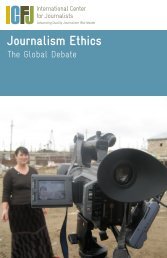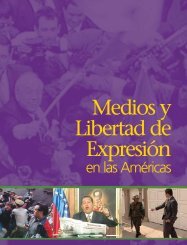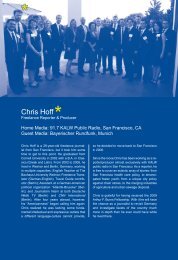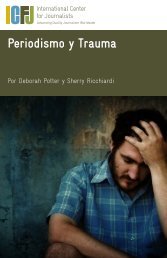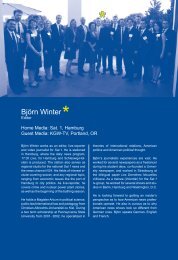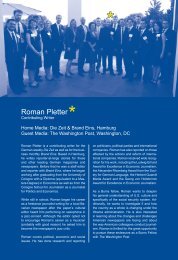Disaster and Crisis Coverage - International News Safety Institute
Disaster and Crisis Coverage - International News Safety Institute
Disaster and Crisis Coverage - International News Safety Institute
Create successful ePaper yourself
Turn your PDF publications into a flip-book with our unique Google optimized e-Paper software.
Case Study: Editor reaches out<br />
After the terrorist attacks of September 2001 on New York City’s World Trade<br />
Center <strong>and</strong> the Pentagon in Washington, D.C., some newsroom managers<br />
made extra efforts to stay connected to their journalists working around-theclock<br />
to document the horror.<br />
On September 13, 2001, William E. Schmidt, a New York Times editor, wrote a<br />
memo to his staff: “In the last few days, too many of you have seen things, done<br />
things, photographed things, that have sucked the emotional wind out of you.<br />
And this story is not going away any time soon.<br />
“We all know there is a great tradition among journalists to put your feelings <strong>and</strong><br />
fears behind you, <strong>and</strong> just get the job done. We applaud you for that kind of<br />
professionalism. But we also know just doing your job – as a reporter or<br />
photographer out in the streets, or as an editor or clerk in the newsroom – takes<br />
its toll on you <strong>and</strong> your family.”<br />
Schmidt listed resources the newspaper was providing <strong>and</strong> reminded staff that it<br />
is the journalist’s job to bear witness, but the scenes of horror <strong>and</strong> human misery<br />
so many were witnessing could leave scars.<br />
<strong>International</strong> Center for Journalists<br />
54



